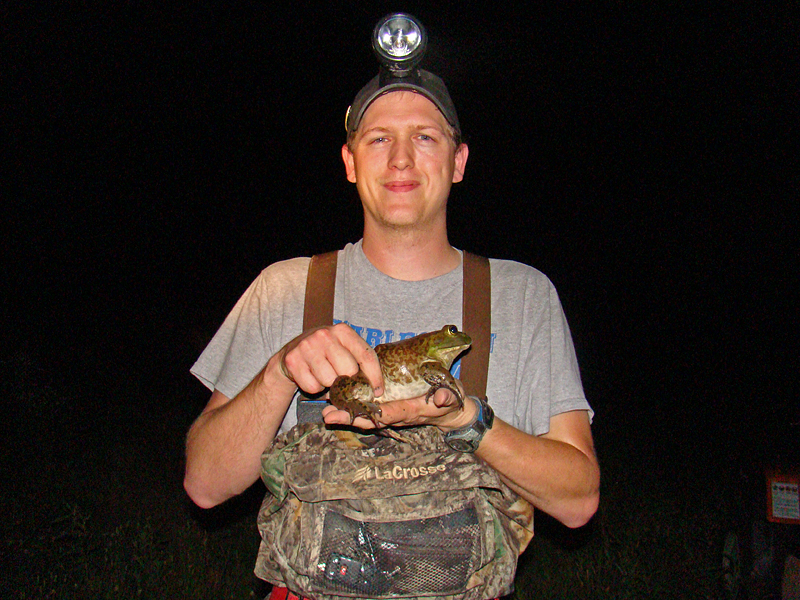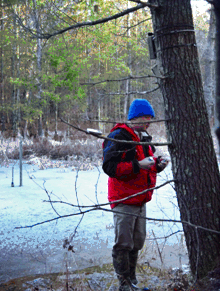Species and their Ecology
The U.S. is home to approximately 287 of the world's estimated 6,000 amphibian species. The number of known species changes periodically as new species are discovered and new genetic techniques (e.g. molecular genetics) allow scientists to distinguish among cryptic species.
Resources

Amphibian Taxonomy
ARMI conducts research on the natural history of species; writing reports and describing the ecology of America's amphibians. ARMI also collaborates with federal and state partners to design, implement, and evaluate management actions that benefit T&E and other imperiled amphibian species.
Federal and State Partners: Information about the status, management, and conservation of amphibians is found throughout the ARMI web site [e.g. Products Database and Topics Sections]. Please consult the "National Amphibian Atlas" to identify the approximate range of the species of interest.
Species and their Ecology - ARMI Papers & Reports
Data Release Amphibian nighttime call data from Midwest ARMI cricket frog surveys 2024
Data Release Amphibian nighttime call data from Midwest ARMI surveys 2003-2008
Papers & Reports Amphibians of Louisiana
View All Data Releases on Species and their Ecology
* PDF documents require Adobe Reader or Google Chrome Browser for viewing.


